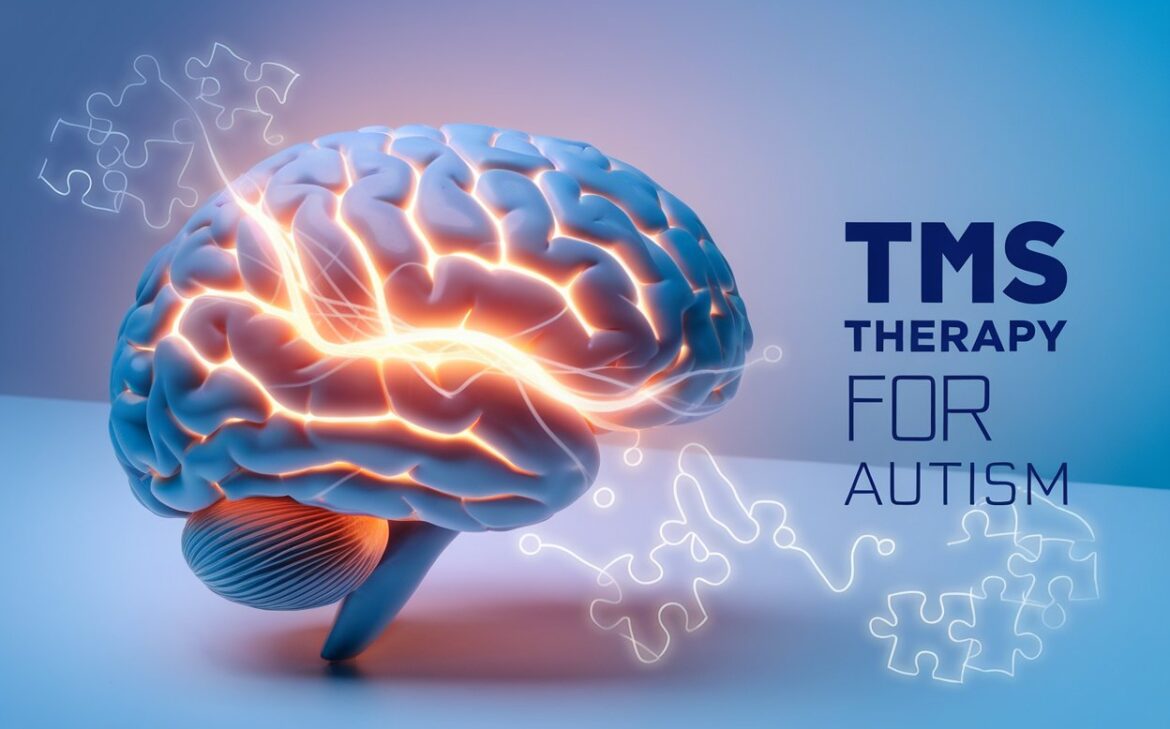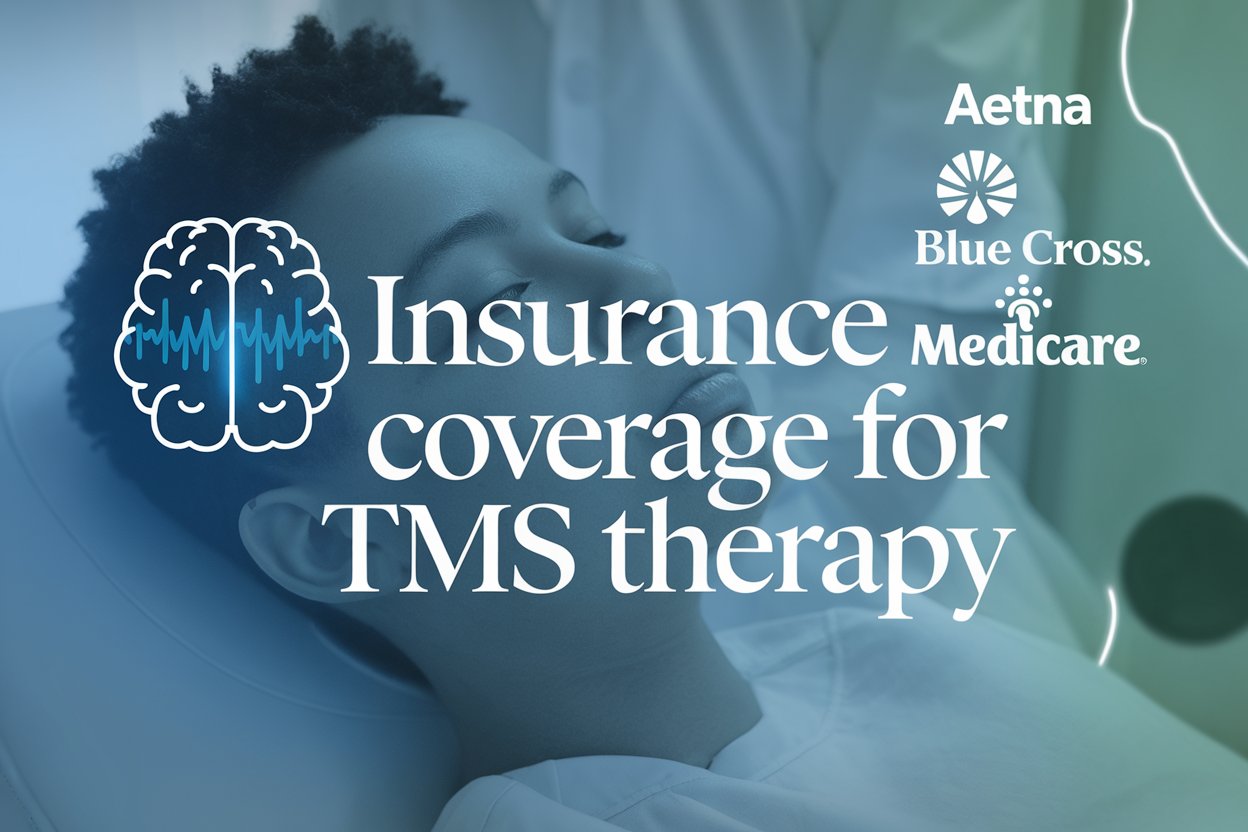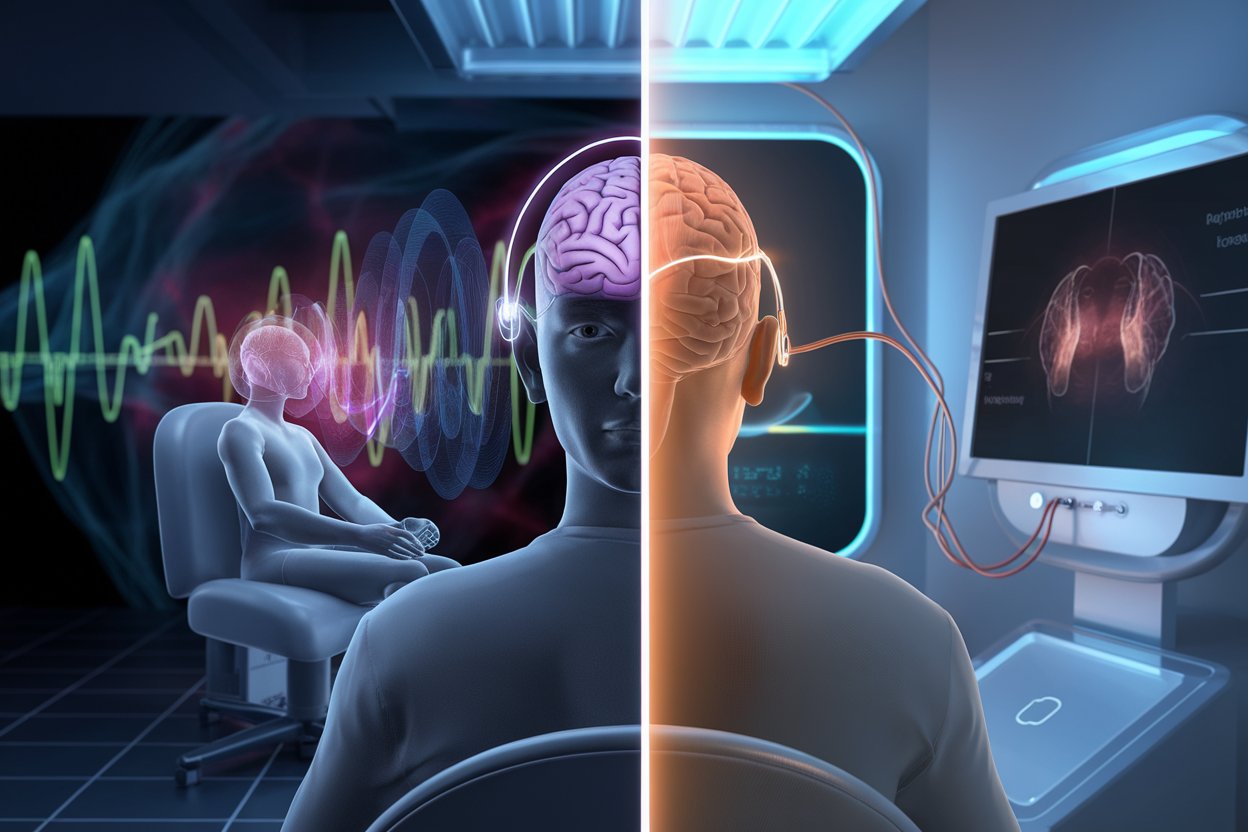Transcranial Magnetic Stimulation (TMS) is becoming more popular for treating various mental health issues. But can TMS therapy be helpful for autism? More parents, carers, and professionals are asking this question as they look for non-invasive treatments for Autism Spectrum Disorder (ASD). This guide looks at TMS as a possible treatment for autism that isn’t officially approved. It covers the research on it, the risks involved, and who may find it helpful.
Understanding TMS Therapy
Understanding Transcranial Magnetic Stimulation (TMS) Therapy delves into the effectiveness of TMS, its advantages, and how it can be used to target brain stimulation to treat conditions like autism and depression.
What is TMS Therapy & How Does It Work?
Transcranial Magnetic Stimulation (TMS) therapy is a non-invasive treatment that uses magnetic fields to activate nerve cells in certain parts of the brain. It is usually used to help with depression when other treatments, like medicine and therapy, haven’t worked well. A coil on the scalp sends magnetic pulses that can help control brain areas related to mood and behaviour.
TMS affects how the brain’s electrical signals work. Magnetic pulses safely go through the skull to specific parts of the brain, helping to activate nerve cells and possibly fixing issues with how the brain works. TMS is thought to help with depression by stimulating parts of the brain that control mood and may not be working properly. Researchers think that TMS could help change brain activity in areas connected to social skills and communication for people with autism.
Can TMS Therapy Help with Autism?
This section explores the off-label use of TMS therapy for autism, highlighting potential benefits, current research, and the need for caution with unapproved applications.
Exploring the Off-Label Use of TMS for Autism
People are researching whether TMS therapy can help with autism. However, the FDA has not yet approved TMS as a treatment for autism. Research on using TMS for autism shows positive results in some areas, like better social interaction, less repetitive behaviour, and improved communication. It’s important to know that these uses are called off-label, which means they are not the usual, approved ways to use TMS.
What Do Studies Say About TMS and Autism?
Recent studies show that TMS can help focus on parts of the brain related to social behaviour, like the prefrontal cortex. A study in the Journal of Autism and Developmental Disorders found that repeated TMS treatment over several weeks helped lessen irritability and improve repetitive behaviours in children with autism. However, results can be different, and researchers agree that we need more large studies.
- Study Example 1: A study by Rotenberg and others looked at how TMS affects social behaviours in teens with ASD. The results showed that some people had better eye contact and less social anxiety after several sessions.
- Study Example 2: A 2022 clinical trial by the University of Louisville showed a decrease in repetitive behaviours in participants after 10 sessions of TMS therapy.
It’s important to remember that TMS does not “cure” autism, even with these results. Rather, it may be a supportive therapy to help manage specific symptoms.
Potential Benefits of TMS Therapy for Autism
TMS therapy shows promise in enhancing social skills for individuals with autism, targeting brain areas linked to communication and fostering improved social responsiveness and interaction.
Improvement in Social Skills
Early evidence shows that TMS might help improve some social skills in people with autism. By focusing on parts of the brain linked to communication and socialising, TMS could improve these skills. Some small studies have shown that eye contact and social skills have improved.
Reduction in Repetitive Behaviours
Repetitive behaviours are a key sign of autism. Research shows that repetitive TMS (rTMS) may help decrease how often and strongly certain behaviours occur, which could help people participate more in daily activities.
Enhanced Communication
Many people with autism find it hard to communicate. TMS may help improve how the brain communicates, which could make both talking and non-talking interactions better.
Who Should Consider TMS Therapy for Autism?
TMS therapy can be an option for people with autism who have certain symptoms that other treatments don’t help. Here are some reasons why someone might be a good candidate:
- Refractory Symptoms:
- If traditional therapies like behavioral interventions or medication have not been effective, TMS might offer additional benefits.
- Communication Challenges: Individuals struggling with severe communication issues that are not improving with standard interventions might consider TMS as a complementary treatment.
- Repetitive Behaviours: TMS may be suitable for individuals with persistent repetitive behaviours that interfere with daily functioning.
Who Should Avoid TMS Therapy?
Not everyone with autism is suitable for TMS therapy. Some people may need to stay away from it, including those who have:
- Seizure Disorders: Because TMS involves brain stimulation, individuals with a history of seizures are generally not considered suitable candidates.
- Metal Implants: People with metal implants near the head, such as cochlear implants or aneurysm clips, should avoid TMS due to the magnetic fields used.
- Severe Anxiety Around Medical Devices: TMS involves a large device and sitting still during treatment. For those with significant anxiety about such scenarios, TMS could be distressing rather than helpful.
Risks and Considerations
While TMS therapy is generally safe and effective, it’s important to understand potential side effects and risks, which can vary based on individual factors.
Side Effects of TMS Therapy
Though TMS is generally well-tolerated, it can come with some side effects. These might include:
- Mild Headache: Some patients report headaches after a session. These are usually temporary and can be managed with over-the-counter pain relievers.
- Scalp Discomfort: The magnetic coil may cause a tingling or tapping sensation on the scalp, which can be uncomfortable for some individuals.
- Risk of Seizure: There is a low risk of seizure associated with TMS, particularly for those with a pre-existing risk factor like epilepsy.
Is TMS Therapy Safe for Children with Autism?
The safety of TMS in children is still being researched, and we do not have a clear answer yet. Early results show that TMS might be safe when used in supervised environments. Parents thinking about TMS therapy for their child should talk to a doctor who knows a lot about both TMS and autism to understand the risks and benefits.
TMS Therapy Process for Autism
Discover what to expect during a typical TMS session, including its gentle, non-invasive approach, session duration, and personalised treatment protocols.
What to Expect During a TMS Session
If you or your child is thinking about TMS, it’s good to know what happens in a session. Usually, a person getting TMS will sit comfortably in a chair with a coil placed close to their head. The coil sends out magnetic pulses that feel like soft taps.
Sessions usually last around 20 to 30 minutes, and the number of sessions can change based on personal goals and the type of TMS treatment being given.
TMS Therapy With Brain Scan Technology
Brain Scan technology is a customised form of TMS that uses an individual’s brain activity, frequently determined by EEG readings, to create a customised treatment. This TMS Therapy aims to offer a more focused treatment, which could help people with autism since the condition varies from person to person. A study published in “Medical Hypotheses” suggested that TMS could help improve the balance between excitatory and inhibitory signals in the brain, which is often unbalanced in people with autism.
Alternatives to TMS Therapy for Autism
TMS is a new treatment, but there are other options for autism that are more commonly used and proven to work. These are:
- Behavioural Therapy (ABA): Applied Behaviour Analysis is a common and effective approach for managing many of the core symptoms of autism.
- Speech and Occupational Therapy: For children and adults with communication or daily living challenges, these therapies can be incredibly helpful.
- Medication: Medications may be used to manage symptoms like anxiety, irritability, or hyperactivity. While these do not treat autism directly, they can help improve quality of life.
Is TMS Right for You or Your Child?
Figuring out if TMS therapy is suitable for your loved one with autism can be difficult. TMS is not the main treatment for autism and shouldn’t take the place of behavioural or educational therapies. Instead, it could be an extra option to look at if other treatments aren’t working well enough.
It’s important to talk to a healthcare provider who knows about both TMS and autism to see if this treatment is suitable for you. Keep in mind that TMS can help reduce some autism symptoms, but it is not a cure, and we need more research to understand it better.
Conclusion: Can TMS Therapy Help with Autism?
Can TMS therapy help with autism? Early research shows that TMS might help reduce some symptoms of autism, particularly in social skills, communication, and repetitive behaviours. TMS is not an approved treatment for autism, so it should be used carefully and with advice from a doctor.
If you are thinking about TMS for yourself or someone else, talk to a qualified doctor to understand the possible benefits and risks. Everyone reacts differently to autism treatments; what helps one person might not help another.
Explore the Benefits of TMS Therapy Today
Take the next step in exploring innovative solutions like TMS therapy. Contact American TMS Clinics to discuss personalised treatments for your unique needs.ke TMS therapy. Contact American TMS Clinics to discuss personalized treatments for your unique needs.





